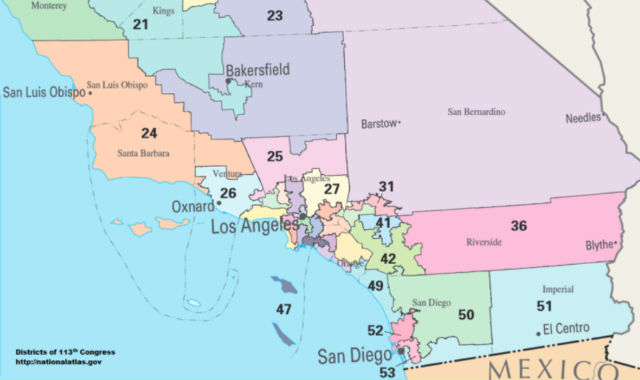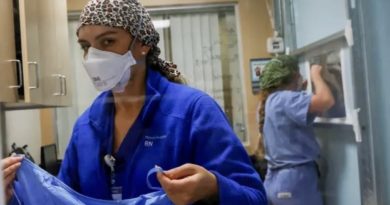Daily Business Report-Feb. 26, 2019
Current congressional districts in Southern California.
California preparing to draw
lines for the election in 2022
By Dan Morain |CALmatters
One election is a fading memory and another is year away. What better time to prepare for the vote in 2022?
That’s what California State Auditor Elaine Howle is doing.
Howle’s office must do the spade work necessary to create a new California Citizens Redistricting Commission to draw district lines for legislative, congressional and Board of Equalization seats. And she wants your help.
“We’re going to do this as publicly and with as much transparency as we can,” Howell said.
The State Auditor is responsible for ensuring the commission is as independent and reflective of California as possible. You can start submitting applications to serve on the commission on June 10.
To qualify, you must have been a registered voter for the past five years, and registered in your party of choice—or have been a no-party preference voter—for five years. You must have voted in at least two of the last three state elections, and you can’t have been a campaign donor in recent years.
You are ineligible to serve if:
You or an immediate family members have served in or been a candidate for congressional or state office.
You’ve been an officer, employee or paid consultant for a California political party.
You’ve been a paid consultant for a candidate for California congressional or elective state office.
You’ve been a registered lobbyist.
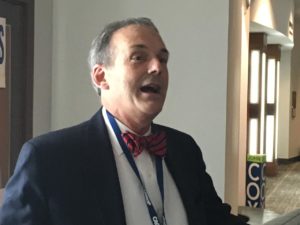
Auditors will winnow down the applications and pick eight commissioners by July 5, 2020. Those eight will pick the final six members.
The commission will set about drawing lines for the coming decade, completing the task by Aug. 15, 2021.
California voters in 2008 and in 2010 approved initiatives stripping politicians of the power to draw their own district boundaries, and placed it in the hands of the independent commission.
Republican donor Charles Munger Jr. took the lead in funding the initiatives, and Gov. Arnold Schwarzenegger, also a Republican, promoted them. Schwarzenegger continues to campaign against gerrymandering nationally, touting California’s model.
In California, district lines are not drawn in ways that protect incumbents, unlike in most states where the party in power tweaks district lines to ensure they retain control.
In recent years, several California legislative and congressional seats have become competitive. As it happens, Democrats are winning most of the swing seats, but that’s because Republicans are losing registration.
__________________

Starla Lewis, Ishe, and YahYah
Knowing Your Worth; a Multi-generational Perspective
“Woman’s Worth” is a Multigenerational Women’s Empowerment experience facilitated by Starla Lewis, Ishe and YahYah. Three women, three generations within the same family, offering three unique perspectives on what it means to be a woman.
They utilize poetry, storytelling, and music as an inspirational tool during the presentation, to bridge the gap between mothers and daughters, and inspire all women to have more honest and authentic conversations with each other about womanhood.
Starla, Ishe and YahYah will speak at the Leadership Conference April 5 as part of San Diego Women’s Week sponsored by North San Diego Business Chamber. Women’s Week runs April 1-5. Attendees will receive an autographed copy of their book, “I Am: My Own Self-Validation.”
Click here for the schedule.
__________________

SDSU to prepare environmental impact
report on Mission Valley campus
San Diego State University says it continues to make progress on building its future Mission Valley campus.
During the past month, the university held three scoping meetings – one on campus and two in Mission Valley – to accept public input on its Notice of Preparation (NOP).
Nearly 150 community members attended those meetings to learn about the site plan and to speak with SDSU technical experts and provide feedback. The university has also received more than 90 comment letters on the NOP. The public comment period closed Feb. 19.
“We are so grateful to all the individuals and organizations that took the time to give us input and feedback,” the Mission Valley Team noted in an update issued on Feb. 19.
Over the next few months, SDSU’s technical team will go to work analyzing the project and writing the draft Environmental Impact Report (DEIR). The DEIR is tentatively scheduled for a summer release.
For additional information about the plan and progress, visit the Mission Valley website, which is regularly updated, at http://missionvalley.sdsu.edu/.
__________________
Institute in San Diego awarded $1 million
grant for ‘Caring Campus Initiative’
Ascendium Education Group, one of the nation’s leading higher education philanthropies, has awarded a $1million grant to the San Diego-based Institute for Evidence-Based Change (IEBC) for the “Caring Campus Initiative.” The objective of this program is to increase student retention and success in community colleges by creating and cultivating Caring Campus environments through the intentional inclusion of all staff in student success efforts.
Under the two-year grant, IEBC will work with 20 colleges from around the United States to participate in the Caring Campus Initiative, which is a coaching-based approach to connect all staff to students, ensuring that all staff play a role in removing barriers and enabling students to achieve success.
Research has documented students leaving college because they do not feel connected to the institution (Tinto Leaving College,1993). Caring Campus recognizes and leverages the value of connectedness for increasing the likelihood that students will continue towards, and succeed in attaining, their educational goals. Staff are often the first contact students have with the institution: a phone call to student services, a meeting with financial aid officers, landscape staff while walking across campus, bookstore clerks, and a wide range of other personnel. Staff interaction with students can set the stage for successful enrollment, persistence, and completion.
__________________
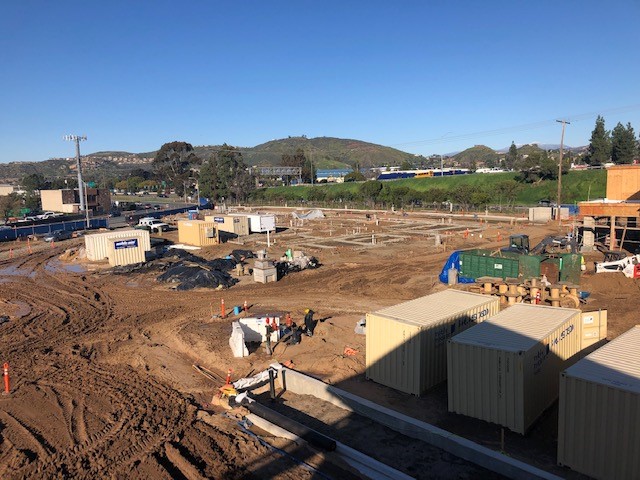
Fletcher Plaza project reaches full pre-lease
occupancy before construction is finished
Retail Insite is proud to announce that Fletcher Plaza at the NWC of Fletcher Parkway and Highway 67 in El Cajon has reached 100 percent pre-lease occupancy before construction is completed.
The signed tenants are In ‘N Out Burger, Blaze Pizza, California Fish Grill, Urbane Café, Mattress Firm, and Hampton Inn. Construction is expected to be completed by mid to late April, with tenants starting to open in May and June.
Don Moser and Matt Moser of Retail Insite represented the Owner, Brixton Capital, based in San Diego. The last lease was signed by The Joint, represented by Brian Pyke of Retail Insite. Construction of the site is by Dempsey Construction, based in San Diego.
__________________
General Atomics intruduces next
generation of its Predator series
General Atomics Aeronautical Systems Inc. has introduced the next generation of its Predator remotely piloted aircraft, the MQ-98. The company named its baseline MQ-9B aircraft Skyguardian, and its maritime surveillance varient SeaGuardian.
The Royal Air Force acquiring SkyGuardian as part of its Protector RG Mk1 program and is scheduled for first delivery in the early 2020s. Belgium also selected SkyGuardian for its defense needs. The RPA is being considered as an option for the Australian Defence Force, who chose General Atomics to supply the RPA system for Project Air 7003.
“MQ-9B is the world’s only RPA being developed to be certified to fly in non-segregated, controlled airspace,” said Linden Blue, CEO of General Atomics Aeronautical Systems. “The development is the result of a five-year, company funded program to deliver an unmanned aircraft to meet the stringent airworthiness type-certification requirements of NATO and various civil authorities.”
__________________
Salk scientists show how high-fat
diet drives colorectal cancer growth
As cancer death rates drop overall, doctors have noted a frightening anomaly: deaths from colorectal cancer in people under 55 appear to be creeping up. According to the American Cancer Society, deaths in this younger group increased by 1 percent between 2007 and 2016.
A new study led by Salk Institute scientists suggests that high-fat diets fuel colorectal cancer growth by upsetting the balance of bile acids in the intestine and triggering a hormonal signal that lets potentially cancerous cells thrive. The findings, which appeared in Cellon Feb. 21, 2019, could explain why colorectal cancer, which can take decades to develop, is being seen in younger people growing up at a time when higher-fat diets are common.
__________________
Fish & Richardson opens Shenzhen office
Fish & Richardson as opened its Representative Office in Shenzhen, China. Fish has helped China’s leading companies obtain, enforce and defend their intellectual property rights in the U.S. and Europe for many years and will now support this work from its new location in Shenzhen. The Chinese Ministry of Justice approved Fish’s application in November 2018, and the office opened on Jan. 1, 2019.
Fish principal Ryan McCarthy is the firm’s chief representative in Shenzhen. He is joined by Yong (Eric) Peng.
__________________
Personnel Announcements
Cubic Corporation promotes Laurent Eskenazi
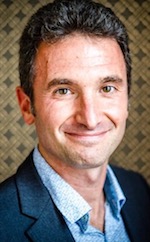
Cubic Corporation announces the promotion of Laurent Eskenazi to the role of managing director, EMEA, for its Cubic Transportation Systems business division. Eskenazi will continue to work from Cubic’s Redhill, U.K. office where he previously served as deputy managing director of EMEA. Eskenazi will manage Cubic’s teams in the U.K., Germany and Sweden and is responsible for expanding Cubic’s transportation business into regions outside of the U.K. Eskenazi will report to Matt Cole, president of CTS.
Prior to joining Cubic, Eskenazi was an executive for French transport and technology company Thales, responsible for all business operations of the Revenue Collection Systems business across nine countries. His roles included managing director of Thales Revenue Collection Systems business line; corporate business process director, bids and projects; and department director in various domains including air traffic management, air defense and surface ships.
Eskenazi holds a doctorate in electrical engineering and master’s degree in communications and signal processing from the University of Florida as well as an engineering degree from Telecom Sud Paris.
__________________
Commentary
Why not try a ‘faster’ speed rail system first? It could work now
By Jim Gonzalez, Special to CALmatters
Claims by President Donald Trump and other naysayers aside, Gov. Gavin Newsom provided clear analysis and direction regarding the stalled California High Speed Rail Project.
The governor’s message was twofold: finish the Central Valley link between Merced and Bakersfield, and continue planning to complete high-speed rail within sensible and fiscally prudent guidelines and phases.
To this, I have a modest suggestion:
Gov. Newsom should consider a statewide faster-speed rail system. It is innovative and can be accomplished sooner and cheaper.
California has the technological means to provide passenger rail service which can travel at 125 miles an hour, an increase in speed of 58 percent over the 79 mph speed limit which governs most of the rail lines now serving California.
Already in service in California are six Siemens Clean Diesel Electric locomotives. They’re designed to safely operate at 125 mph.
These environmentally-friendly locomotives are the first of their type to have received Tier IV emissions certification from the Federal Railroad Administration, and are part of a multi-state procurement.
These faster speed locomotives already operate on the Capitol Corridor between San Jose and Sacramento, and could be mated with new passenger rail cars being, which are being built by a Sumitomo/Siemens partnership at Siemens’ rail car manufacturing facility in Sacramento.
You read that right. The railcars are being made in California, providing well-paying manufacturing jobs for our middle class.
When these train sets are rolling, California will have the potential for 125 mph faster speed rail service. This will instantly put California in the same league as rail services in Europe and Asia where 125 mph service is routine.
True, this isn’t the 200-plus mph rail service promised in the 2008 bond campaign for the California high speed rail. But 125 mph passenger trains would offer service similar to the United Kingdom’s Inter-City 125, which has been in service since 1976.
These 125 mph capable train sets could be put in service on the high-speed rail line being built between Merced and Bakersfield.
This represents a sensible, cost-effective solution that would allow faster-speed rail to operate immediately and spur the economic success on the Merced to Bakersfield line that Gov. Newsom envisions.
These same trains could be a solution for an upgraded line between San Diego and Los Angeles Union Station and north to San Luis Obispo. Riders would use faster-speed rail in even greater numbers if tracks were upgraded to support 125 mph service.
Technology exists today to employ faster-speed rail service as soon as the tracks, right of way, and system controls are in place. This would be the most cost-effective approach toward making the Central Valley portion of the high speed rail project fully operational.
It also would also dramatically increase passenger service and revenue on many other lines, including the 128-mile link between Los Angeles and San Diego, a welcome alternative to the grinding congestion of Interstate 5 and expensive air travel.
Anyone who has driven between the Bay Area and Los Angeles along Highway 5 knows that the real barrier to high speed rail remains the literal barrier of the Tehachapis.
Getting through that mountain range with grading, rail tunnels, and bridges will always be a profound and costly engineering challenge.
Someday it will be done. However, until the political will and the dollars match this engineering challenge, the Newsom Administration should consider faster speed rail and embark on providing 125 mph rail service for all of California’s train passengers
Jim Gonzalez, a former San Francisco supervisor, leads a political strategy and public policy research firm in Sacramento. He has consulted with passenger rail companies, though views in this commentary are not supported or authorized by any past or present client, jim@jimgonzalez.com. He wrote this commentary for CALmatters, a public interest journalism venture committed to explaining how California’s Capitol works and why it matters.

